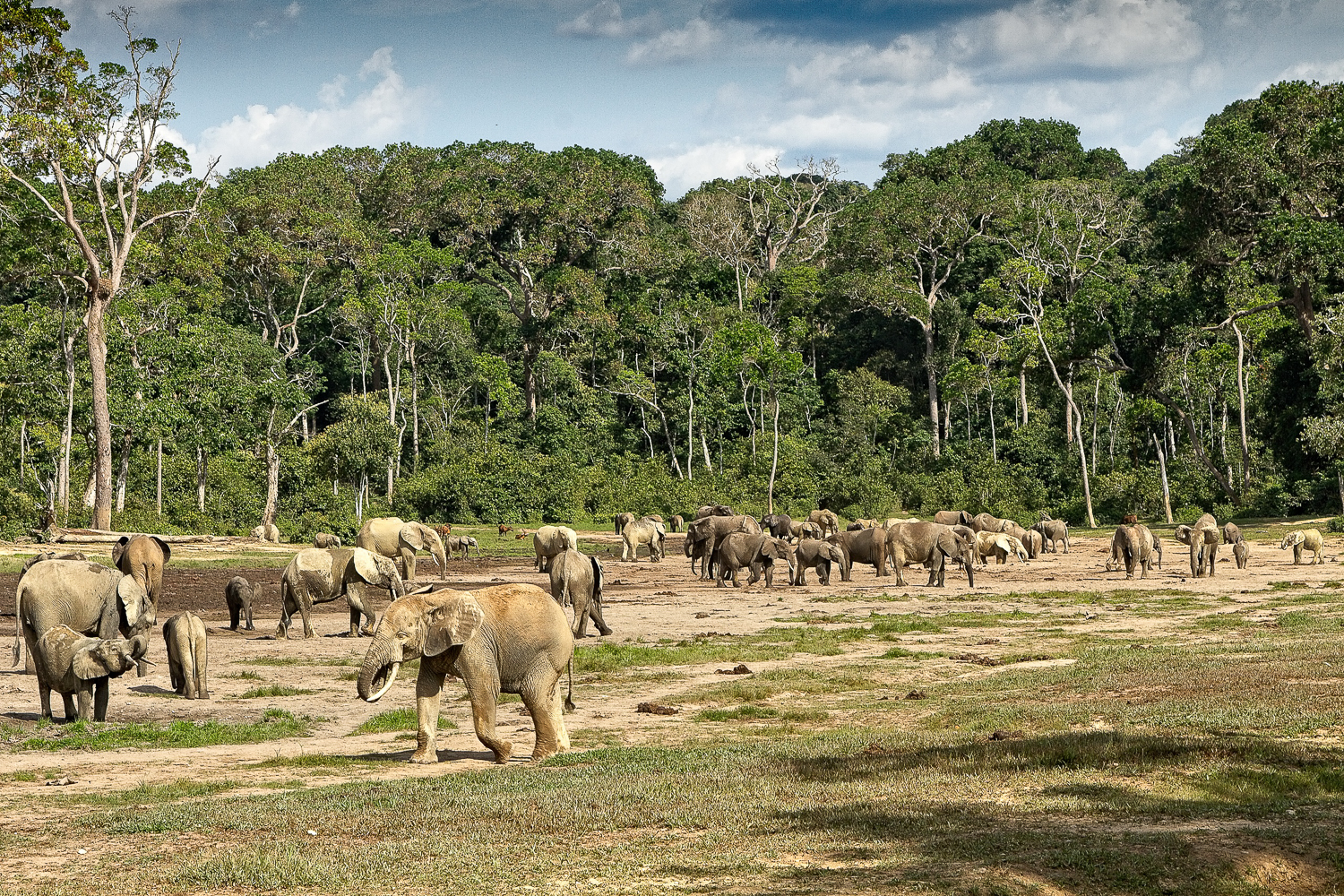»Dzanga-Sangha provides one of the last remaining wildlife refuges for species such as the forest elephant and the western lowland gorilla.«


Dzanga-Sangha: At the Core of the Sangha River Tri-national Complex
Today, the DSPA forms the core of the Sangha River Tri-national (TNS). Together with Lobéké National Park (Cameroon), and Nouabalé-Ndoki National Park (Republic of Congo) and their respective buffer zones, the TNS forms an extensive trans-border conservation initiative, covering 17,000 km2.
Climate
The region receives an average annual rainfall of 1,500 millimeters (Bayanga 1,350 mm; Salo 1,600 mm). Bayanga, located in the transitional zone between two climate types – equatorial Congolese and subtropical –, presents an almost bimodal rainfall pattern.
A Transboundary Protected Area Complex
Forming the first transboundary protected area complex within the Congo Basin, this collaboration has built strong landscape-based conservation efforts among the three countries and provides one of the last remaining wildlife refuges for -species such as the forest elephant and the western lowland gorilla. In 2012, the TNS was inscribed as a UNESCO World Heritage Site.
A Multi-faceted Approach
The TNS partners have adopted a multi-faceted approach to conservation, including national and tri-national anti-poaching patrols to ensure effective surveillance and to stop poaching, smuggling of ivory and arms, and illegal fishing. The partners also collaborate closely on bio-monitoring and ecotourism.
A Successful Collaboration
To achieve the goals of integrating nature conservation and sustainable development, the active participation of the local population is crucial. The government of the Central African Republic takes part in the management of the DSPA as the deputy director is employed by the Ministry of Water, Forestry, Hunting and Fishing. While the endeavor is challenging, the aim is to conserve Dzanga-Sangha and its unique fauna and flora into the next century.
The Beginning
Studies
Management Plan
The DSP
Establishment
The DSPA
Unesco World Heritage
WWF co-management
